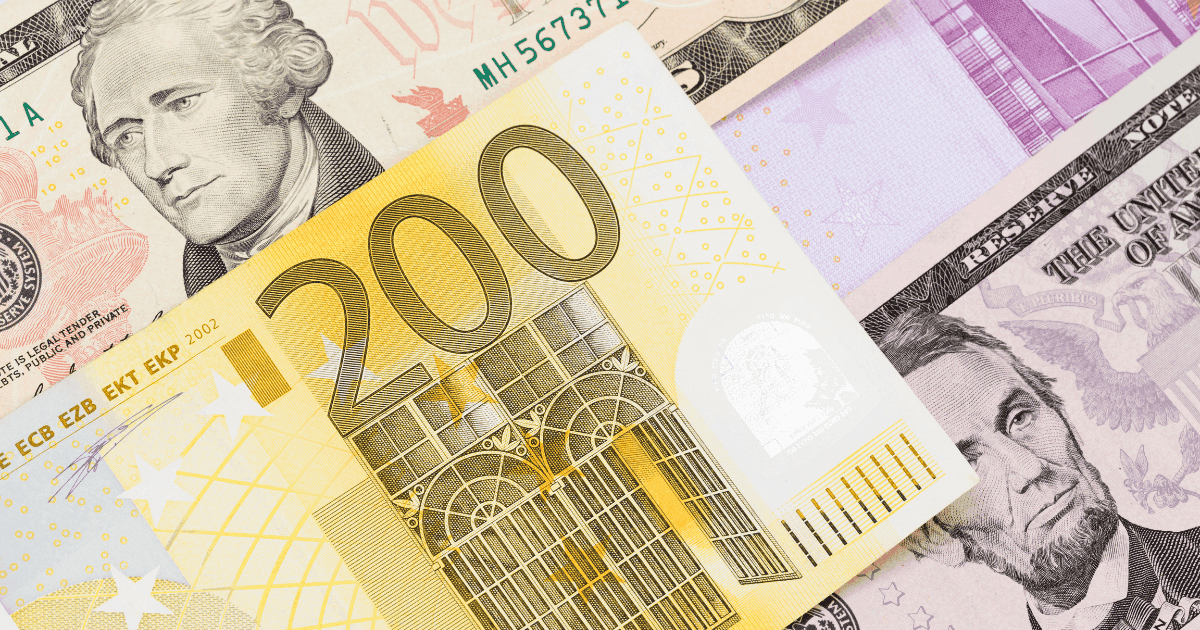
Today, Stablecomp wants to bring you a comparison to the past and present, while looking towards the future horizon of what the stablecoin market can aspire to be.
The first distinction needed to comprehend the similarities between Eurodollars and many Stablecoins is that of Eurodollars compared to the Euro/Dollar exchange pair; while the latter refers to the process of exchanging the two currencies and how much one euro is worth in US Dollars, the former (and the topic of this article) are US Dollar denominated liabilities in a bank outside the United States, or, to better express this concept, liabilities outside of US-based jurisdiction.
LINES OF COMPARISON
From the get go, the comparison to the blockchain based asset comes natural in their definition. Most stablecoins are backed by and denominated through USD, and are in the custody of a non-US based issuer; in other words, most Stablecoins are tokenized EuroDollars, as they are present on a public blockchain.
The assets’ socioeconomic origin can be seen in similar factors; Both eurodollars and stablecoin presence and growth stems from the perceived US Government overstepping in asset seizure and capital control, as well as the search for better yield on a version of the strongest currency, in practical and commerce terms, currently available. As the assets lie outside of the Federal Reserve’s control, interest offered to their holders can be higher than that of US Dollars inside America. Both assets were initially peripheral and now supported by banks, and give former US jurisdictions chances to create a US based financial hub without proverbially bending their political knees.
THE ROAD TO GLOBAL ADOPTION
After the Second World War, agreements stemming from Bretton Woods made the US Dollar the currency effectively backing world commerce and trade. Since its control was strictly in US hands, eurodollars were seen with near indifference by the States; however, as the presence of Dollars outside of the United States grew tremendously mainly because of massive stimulus plans for Europe’s rebuild after the conflit such as the Marshall Plan, the White House started to effectively show its fear for the jurisdiction that couldn’t be put in place for these “Foreign Dollars”, especially after the Soviet Union managed to transfer its eurodollars to other jurisdictions before the US could freeze them; this especially showed under the Eisenhower, Johnson and early Nixon administrations, with the turning point coming in 1973, shortly after President Nixon completely suspended the Gold Standard; as Cold War tensions slowly eased, and the economy opened up, fear became acceptance.
We can see a similar process coming to the Stablecoin market; while initially they constituted near zero the total volume of online payment system volume, the niche has been catching up to the main players in this new digital economy and, as they are blockchain based and completely outside of centralized control in most standard cases, most governments and monetary entities started fearing the product, and in the last five years, Fear Uncertainty and Doubt has pervaded investors as many governments mediatically capitalized on certain protocols collapsing.
However, small changes in narrative can be noticed, and governments are starting to divert from overarching monetary entities’ opinion, such as the IMF (International Monetary Fund) or the FATF (Financial Authority TaskForce); While these entities believe that stablecoin adoption would discourage growth in developing nations’ native currencies and reduce USD liquidity and use significantly, governments are very interested in how US Treasury Bonds, and indirectly Debt, usually collateralizes stabblecoins; the potential to keep the economy going through stablecoin adoption is present, and America knows that their hostility leaves space for opposing nations to capitalize on this new currency era and, as a consequence, potentially detach themselves from the star spangled banner’s dominance.
Even in this bearish phase of the market and general adoption, stablecoin Monthly Active Users (MAU) continue to hold steady, and their exchange volume absolutely dominates the crypto market, even if stablecoins only occupy 10% of its market capitalization; also, american giants such as VISA have started down the road to adoption.
As Stablecoins are of increased interest to governments and institutions, they could be the fundamental ingredient for global Blockchain acceptance.
Stay tuned to our Blog for everything newsworthy in the Stablecoin sector. Check our homepage for more details and Follow our channels:
